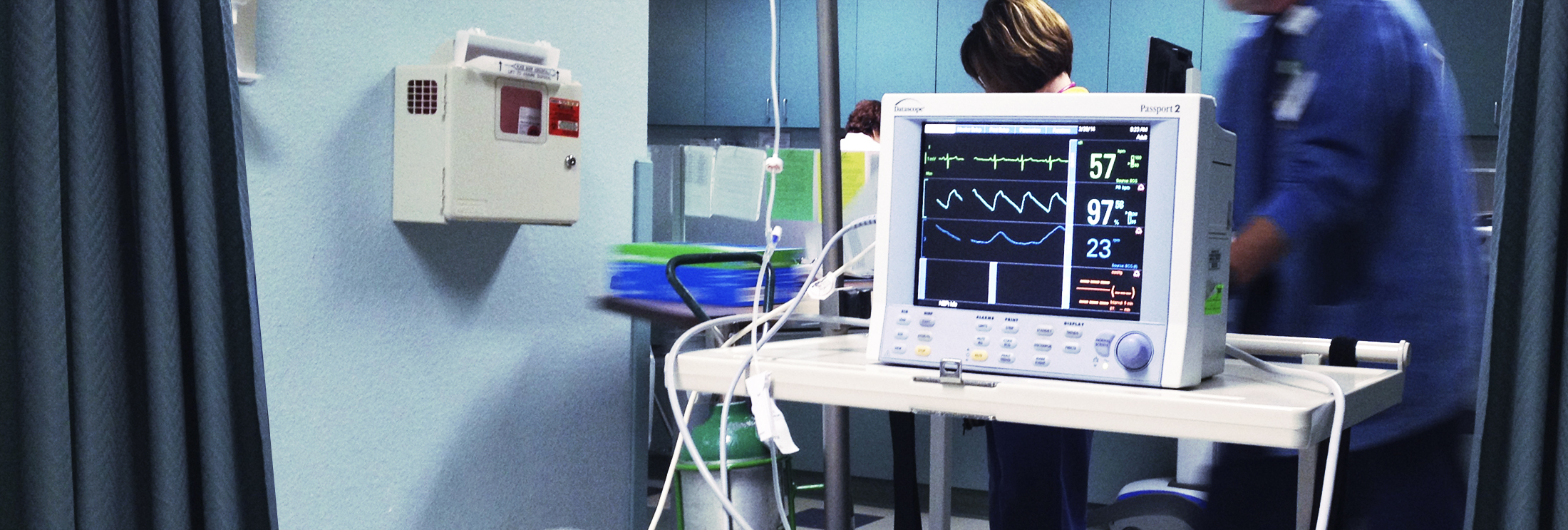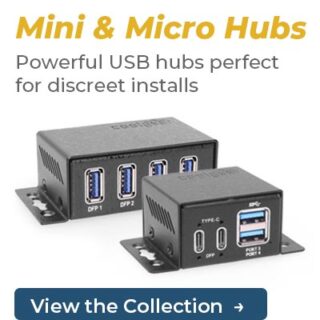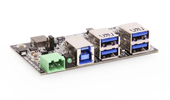
Hospitals are like living organisms made up of complex, interconnected systems with one distinct purpose: to provide immediate, quality medical treatment to the sick and injured. The lifeblood of modern hospitals are the doctors, nurses, staff, and medical care teams working in coordination with the latest advancements in medical technology. From vital sign monitors in the ER to robotics in the operating room, hospitals rely heavily on intricate IT architecture. Reliable, industrial USB connections are a critical component of a hospital’s IT architecture to safeguard its medical technology and ensure it operates efficiently and effectively.
Medical Technology and USB Hubs
In most cases, medical technology in hospitals requires robust integration and needs to be used in conjunction with several devices. To achieve this, industrial USB hubs, particularly self powered USB hubs with multiple ports, are critical in allowing medical staff to use several pieces of equipment at the same time to monitor, diagnose, treat, or medicate their patients. There are several new technologies being integrated into medical practices in every unit in every hospital in the U.S. None of these life-saving technologies would work if it weren’t for the small, hidden from view, but expertly engineered USB hubs delivering the power that brings them to life. Some examples of these medical technologies include:
Robotics and Artificial Intelligence
Surgeons have been able to perform more precise, less invasive surgeries thanks to the addition of surgical robots in the operating room. These robots use AI technology and enhance the skills of the surgeons using them. They are used in many types of surgeries including urological, bariatric, gynecological, and orthopedic procedures. Patients benefit from experiencing decreased trauma from surgeries and improved recovery outcomes. Outside the OR, care robots are being used to assist in the care and rehab of chronically ill or elderly patients. There are also mobile hospital robots that can deliver medication, lab specimens, and are also very effective in disinfecting hospital rooms, equipment, and devices with light.
Aside from being used in conjunction with robotics, artificial intelligence (AI) stands alone in its ability to evaluate patient data more efficiently than humans. AI is able to evaluate larger amounts of patient data, including medical records, history, and symptoms, so that physicians can more efficiently arrive at diagnoses, treatment options, and medicines.
Laptops, Telehealth, and Remote Patient Monitoring
Doctors need reliable power sources to keep their computers working. Physicians and other hospital staff use laptops and computers to perform a wide range of critical job duties. Recently, the uses for these devices have evolved to accommodate for remote patient treatment. Whether a patient has been admitted to a room, or they are being followed up with by a specialist, their doctor will be relying on a fully charged computer in hand that is also able to integrate with other medical equipment when necessary. Telehealth had already been used prior to the pandemic, but has become widespread ever since. Physicians and specialists in hospitals are using telehealth visits, remote patient monitoring, and digital therapeutics to treat patients with chronic illnesses who require numerous follow-ups and ongoing care. All of these remote practices require the use of personal computers integrated with other medical technology, all of which are powered by USB.
3D Printers
3D printing has made prosthetics and implants more accessible and customizable. With 3D printers in hospitals, orthopedic and cardiac surgeons are able to build custom implants, stents and prosthetics that perfectly fit each patient’s unique anatomic specifications. And these items can be created instantly. Physicians have found that with better fitting medical devices and implants, their patients’ bodies accept the devices and report better comfort and performance as a result.
Internet of Things
Hospitals are gearing up for improved connectivity which results in better patient outcomes across the board. Getting 5G-enabled devices, supported by Internet of Things, more and more advanced medical technologies will be interconnected leading to a healthcare system that is predictive, preventative, personalized, and participatory. The Internet of Things is the invisible network formed by physical objects all connected to the internet. Some examples of this in hospitals are the wearable sensors used for remote patient monitoring and 5g-enabled medical devices. Better interconnectivity between medical devices leads to patient data that is incredibly accurate and up-to-date.
This is just a small sampling of hospital technology none of which could be used without a well-integrated IT ecosystem powered by industrial USB hubs. The following case study is a great example of Coolgear’s USB hubs in action at TouchPoint Medical in Odessa, FL.
Industrial USB at TouchPoint Medical
Workstations are a vital component of hospitals that allow medical technology to be mobile. TouchPoint Medical’s Medication Delivery Carts needed to be able to support a number of plug-in accessories.To ensure a smooth medication dispensing experience, the connected peripherals of these mobile workstations needed to work in tandem and communicate under one system. To support this wide variety of peripherals, TouchPoint needed robust, reliable, and cost-effective power and connectivity solutions.
Through working with Mike Timko, the Principal Design Electrical Engineer at TouchPoint, Coolgear recommended the CG-7PU31HB, a 7 port industrial USB hub with ESD Surge protection and port status LEDs. With seven screw-locking downstream USB Type-A ports, the CG-7PU31HB was perfect for expanding the system’s connectivity capabilities and allowing the use of multiple peripherals.
Case in point – it did the trick extremely well. The CG-7PU31HB’s has 7 ports that support 15KV ESD surge protection for each port to protect all connected peripherals. It is also 3.2 Gen 1 compliant ensuring super-fast 5Gbps data transfer speeds. It supports super speed, high speed and full speed which enables it to be compatible with 2.0 / 1.1. This metal hub with its port status LEDs, housed in a rugged steel chassis with built in mountable flanges, and sizable port count made this the perfect fit for TouchPoint Medical. The 7-port hub is perfect for workstations installations in offices, labs, warehouses, and other industrial applications.
USB hubs, as well as cables, drives, and connectors are the animating sources of all medical equipment. Industrial grade, ruggedly built USB is a core aspect of engineering a reliable and robust healthcare IT ecosystem. We at Coolgear work with Integrators, Engineers, and Product Development team leads from the medical field and other technology industries on a daily basis to assist in finding the perfect power and connectivity solutions. Let’s connect!




















